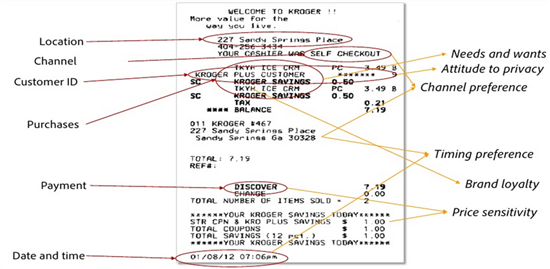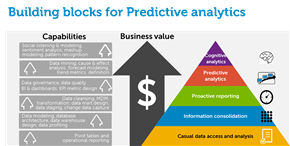In no uncertain terms, the use of predictive analytics is crucial for SMBs to remain competitive. A recent survey revealed that companies that rate themselves substantially ahead of their peers in their use of data are three times more likely to rate themselves as equally ahead in financial performance. Of those surveyed, 36 percent reported they have measured positive top- and bottom-line impact from their predictive analytics efforts.
Which areas of marketing can benefit from predictive analytics? Almost every area. Here are a few examples:
- A web experience manager can determine how long an article should remain on a site before the content needs to be refreshed
- Analysts can determine which customer actions are most likely to lead to conversions.
- CRM managers can predict which customers are most likely to respond to which types of cross-sell offers.
- Advertisers can predict the triggers for increasing click-through rates.
Despite the growing awareness of these benefits, predictive analytics remain somewhat of an enigma in terms of implementation into marketing efforts. Take, for example, retail outlets. As a marketing manager, imagine a photograph of a person with a shopping cart walking down an aisle packed with products. What would be the most interesting analytical data one could get out of this? Looking at the shelves to see what products are depleted for forecasting? It is pretty obvious that one can track inventory using sophisticated supply chain management techniques, but that’s not predictive analytics.
I think it’s much more interesting to look at the shopper’s receipt. By looking at receipts, we can begin to assess what the shopper’s needs and wants are. What items and quantities does the shopper typically buy? Is there a preference for self-checkout lanes or full service? Is there a time of day preference? Is there brand loyalty or price sensitivity? Are payments done with cash, by debit card, or by credit card with a reward incentive? We may even be able to assess the shopper’s attitude toward privacy—is the name, phone number or address printed on the receipt?

Analyzing this data enables marketers to make very useful predictions about what this shopper may do in the future, and as the number of receipts for this shopper increases, and as the receipts for all shoppers are aggregated, the ability to make predictions about individual and group behavior increases, enabling highly targeted marketing campaigns. The usefulness of predictive analytics is undeniable for businesses of all sizes.
So how do you get started? First, you need to recognize that predictive analytics is not where you will start your analytics journey. The first step is always to get “street smart” about your data.
What should you be collecting and how should you do it? How should you be modeling data? Once you understand this, you can begin to make incremental investments in your infrastructure to support data integration—bringing all the different data sources together—and then look for an analytics software solution in order to start creating the algorithms you’ll need for prediction.

One thing to keep in mind: Many of the available solutions and services were built for large enterprises, meaning they don’t necessarily meet the needs of SMBs in terms of scalability and budget. It is important to take a careful look at vendors who specialize in medium-sized business needs.



